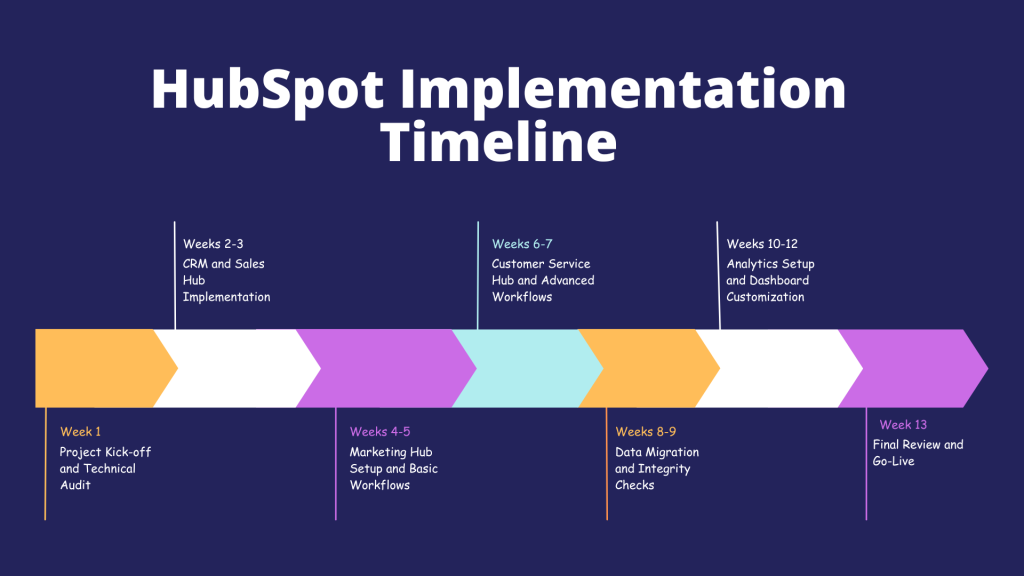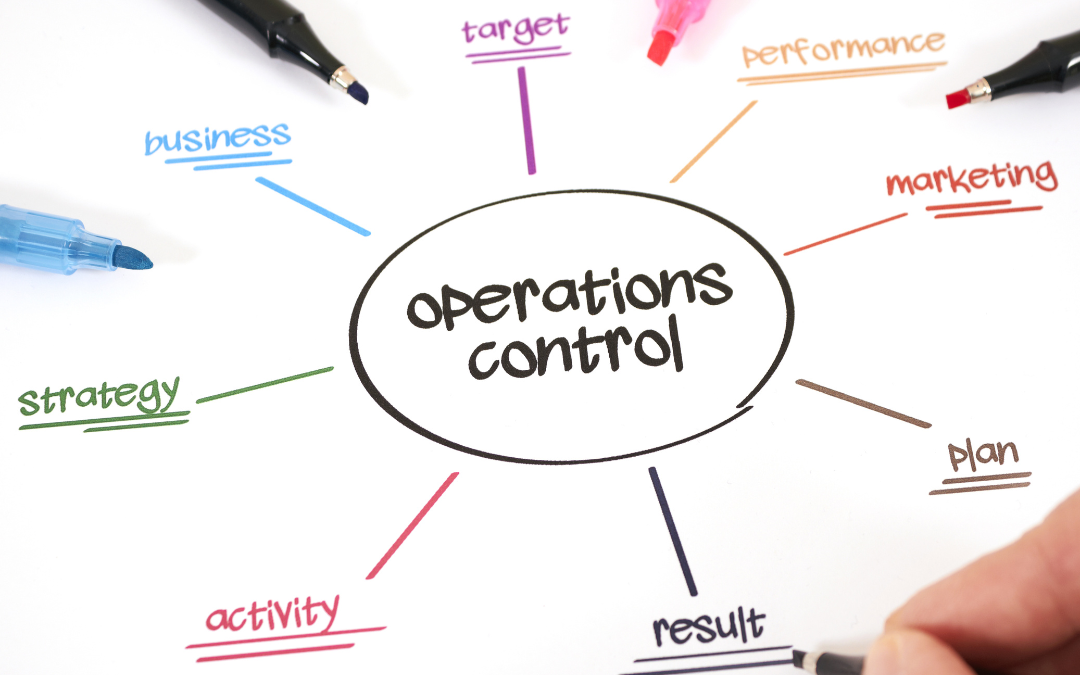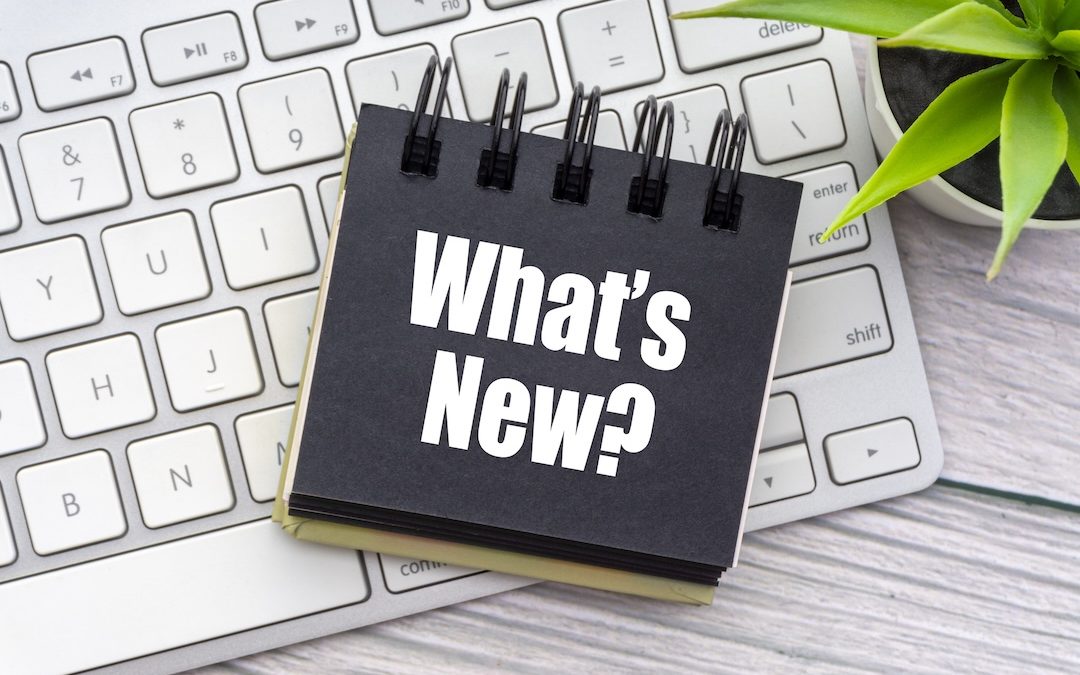Properly implementing HubSpot is a crucial step for businesses looking to maximize their marketing, sales, and customer service efforts. HubSpot serves as an all-in-one solution that centralizes customer engagement and streamlines various aspects of your business operations. To ensure successful HubSpot implementation, it’s essential to follow a structured approach. In this comprehensive guide, we will walk you through the key steps and strategies to unlock the full potential of HubSpot.
I. Setting the Stage for HubSpot Implementation
Before diving into the technical aspects of HubSpot, it’s important to establish a solid foundation for implementation. This involves defining clear goals and objectives, identifying key stakeholders, mapping out workflows, and establishing a timeline for the implementation process.
- Defining Clear Goals and Objectives – A successful HubSpot implementation starts with clear and specific goals. What are you aiming to achieve with HubSpot? Are you looking to increase lead generation, improve customer service, or enhance your marketing efforts? Formulate key performance indicators (KPIs) using SMART goals (Specific, Measurable, Achievable, Relevant, and Time-bound) to ensure that your objectives are grounded in achievable outcomes.
- Identifying Key Stakeholders – Identifying key stakeholders within your organization is crucial. Who will be responsible for overseeing the HubSpot implementation process? Ensure that all relevant departments, such as marketing, sales, and customer service, are involved from the beginning to align HubSpot with their specific needs and expectations.
- Mapping Out Workflows – Map out your existing workflows and processes to identify areas where HubSpot can make a significant impact. Consider how HubSpot’s CRM capabilities, lead generation tools, and marketing automation can be integrated into your current workflows for maximum efficiency.
- Establishing a Timeline -Create a detailed timeline for the implementation process, breaking it down into manageable phases. This timeline will serve as a roadmap for your team, ensuring that everyone is aware of their responsibilities at each stage of the implementation.
II. Resource Allocation: Team and Budget
Efficient resource allocation is essential for a successful HubSpot implementation. It’s not just about the number of people involved but also their unique skill sets. Take a detailed assessment of your team’s capabilities to assign roles effectively, ensuring excellence rather than just filling positions.
- Evaluating Team Competencies – Assess your team’s proficiency in various areas, such as data analytics, customer journey mapping, content creation, and technical skills. This assessment will help you determine who should be responsible for specific tasks during the implementation process.
- Budgeting Beyond Licensing Costs – Budgeting for HubSpot implementation goes beyond upfront licensing costs. Consider the cost of training your team, both initially and for ongoing education. Anticipate the integration of additional tools or services, which may come with their own subscription fees and require specialized skills to implement. By strategically allocating resources, you not only ensure a successful HubSpot implementation but also facilitate scalable growth and maximize return on investment (ROI). It’s also a good idea to allocate budget for ongoing support. Although HubSpot is very flexible and user-friendly, there are cases when time and resources might be limited, so it’s best to plan ahead.
III. Technical Audit and Compatibility Check
Before diving into HubSpot implementation, it’s crucial to conduct a technical audit to review your current technology stack. This audit serves as a checkpoint to identify compatible platforms and potential incompatibilities.
- Creating a List of Software Tools – Compile a list of all the software tools currently in use within your organization. This list should include tools for CRM, content management, email marketing, and any other relevant software.
- Cross-Referencing with HubSpot’s Compatibility – Cross-reference your list of software tools with HubSpot’s list of compatible platforms. HubSpot seamlessly integrates with many popular tools like Salesforce, WordPress, and Google Analytics. However, it’s important to be aware of potential incompatibilities, especially if you are using outdated or bespoke systems.
- Strategizing Solutions for Incompatibilities – Identifying potential incompatibilities is just the first step. The next is to strategize solutions. This may involve updating legacy systems or leveraging third-party integrators to bridge the gap. HubSpot’s API provides opportunities for custom integrations, allowing you to adapt the platform to your unique needs.

By giving due attention to the technical audit and compatibility check, you minimize risks and ensure a smooth HubSpot implementation, enabling you to fully utilize the platform’s capabilities from the start.
IV. Crafting an Implementation Timeline
When planning your HubSpot implementation, one of the initial decisions you’ll face is whether to take a phased approach or dive right in with an all-at-once strategy. Each approach has its advantages and disadvantages.
- Phased Approach – With a phased approach, you can gradually roll out HubSpot’s features. Start by implementing core functionalities essential to your business, then gradually introduce more advanced features. This approach minimizes disruption and allows your team to adapt to the new system over time. However, it may take longer to fully realize the benefits of HubSpot, and managing multiple roll-out phases could complicate project management.
- All-At-Once Approach – On the other hand, an all-at-once approach involves implementing all features simultaneously. This is often faster and allows you to leverage the full capabilities of HubSpot sooner. However, it can be risky if your team isn’t adequately prepared, potentially leading to setbacks and longer downtimes.
Considering these pros and cons, you must tailor your implementation timeline accordingly. Here’s a sample timeline for a phased approach:
HubSpot Implementation Timeline
- Week 1: Project Kick-off and Technical Audit
- Weeks 2-3: CRM and Sales Hub Implementation
- Weeks 4-5: Marketing Hub Setup and Basic Workflows
- Weeks 6-7: Customer Service Hub and Advanced Workflows
- Weeks 8-9: Data Migration and Integrity Checks
- Weeks 10-12: Analytics Setup and Dashboard Customization
- Week 13: Final Review and Go-Live

By carefully strategizing these milestones, you can develop a roadmap that aligns with your available resources and business objectives. This guarantees that each team member is well-informed about what to anticipate and their corresponding responsibilities at every stage.
V. Data Migration and Integrity
The data migration process is a critical aspect of HubSpot implementation. Ensuring that your existing data is accurately transferred to HubSpot is essential for maintaining data integrity and setting the stage for reliable analytics and decision-making.
Note: HubSpot provides Data Sync apps and an operations hub that can assist with your migrations. With HubSpot data sync, you can create a one-way or two-way sync between HubSpot and your other apps to unite all of your customer data in one platform. Depending on the app, you’re able to sync contacts, companies, deals, products, invoices, activities, and sales orders with data sync.
- Taking a Data-Driven Approach – Before migration, conduct a thorough audit of your current data assets. Identify which data sets are vital for business operations, including customer information, historical sales data, automation processes, and marketing analytics. Ensure that this data is cleaned and organized in formats compatible with HubSpot.
- Mapping Data Fields – Another important aspect is to map out how your existing data fields will align with HubSpot’s data structure. HubSpot offers a variety of custom fields, so it’s essential to map your existing data fields to these custom fields. This step is particularly important for maintaining data integrity, as poorly mapped data can result in functional glitches and misrepresentative analytics down the line.
- Best Practices for Data Migration –
-
- Backup your data: Always keep a backup of your existing data to mitigate risks associated with data loss during the migration process.
- Test run: Before full migration, run a small batch of data to ensure everything transfers accurately and functions as intended. This step helps you identify any issues before they become major problems.
- Validation and verification: After migration, conduct a comprehensive check to validate that all the data has been transferred correctly and completely. This is also the time to correct any discrepancies or errors that may have occurred during the migration.
- Monitor for consistency: Post-migration, maintain vigilance in continuously monitoring the data to ensure that it remains consistent and accurate. Any discrepancies should be flagged and addressed immediately to ensure your HubSpot system remains reliable.
- Access controls: Implement proper access controls to limit who can edit or alter data sets. This keeps your data secure and maintains its integrity by limiting the potential for accidental alteration or deletion.
By adhering to these best practices, you ensure that your data is not just safely migrated but also remains integral, setting the stage for reliable analytics and informed decision-making.
VI. Marketing, Sales, and Customer Success Automation Workflows
One of the key features of HubSpot is its ability to automate various processes across marketing, sales, and customer success teams. To fully leverage these capabilities, it’s important to tailor your automated workflows to your specific objectives.
- Customizing Automated Workflows – Consider your business goals when customizing automated workflows. For example, if your main goal is customer retention, focus on automated email sequences that nurture existing customers, provide personalized recommendations, and solicit post-purchase feedback. You can also automate support tasks for your customer success team to free up more time. For lead generation, workflows can be triggered by specific actions on your website, such as downloading a whitepaper or filling out a contact form. HubSpot’s automation workflows offer flexibility with conditional triggers based on user behaviors, completed forms, or social media engagement. Workflows can also be activated at specific times to target leads and customers when they are most likely to engage.
- Impact on Operational Efficiency – Automated workflows go beyond sending emails; they can assign leads to sales reps, update contact information, and score leads, among other tasks. This automation eliminates manual work, streamlines business processes, and lets your team focus on more strategic tasks. It enables your sales, marketing, and customer service teams to do more with less, scaling your efforts without the need for proportional resource increases.
- Real-Time Analytics and Adjustments – Furthermore, HubSpot’s built-in analytics tools allow you to track workflow performance in real time. This enables immediate adjustments and ensures that your automation efforts are always aligned with your KPIs. So, not only do you save time and resources, but you also gain actionable insights that drive continuous improvement in your processes.
In summary, workflows in HubSpot are not just a feature but an essential asset for operational efficiency. By aligning them with your objectives and continuously monitoring their performance, you create a dynamic, responsive system that achieves your goals and adapts to your evolving needs.
VII. Training and Adaptation
Continuous learning and adaptation are essential for successfully utilizing HubSpot’s features to their full potential. HubSpot provides a range of resources to help your team stay up-to-date and maximize their skills.
- HubSpot Academy – HubSpot Academy offers comprehensive training courses covering all aspects of HubSpot, from inbound marketing and sales strategies to specific feature utilization. The courses range from beginner to advanced levels and often include certifications for your LinkedIn profile or resume. The academy’s content is regularly updated to reflect industry best practices and HubSpot’s expanding feature set.
- Additional Resources – In addition to the academy, webinars, user community forums, and specialized third-party courses provide further opportunities to expand your HubSpot knowledge. Engaging with these resources keeps your team’s skills sharp and maximizes your HubSpot investment. Note: If you haven’t yet had the opportunity to participate in a HubSpot HUG event, I highly recommend seeking out the next local gathering to attend. HUGs are complimentary quarterly gatherings that provide you with valuable hands-on tips and tricks to maximize your HubSpot experience.
- Staying Current – Ongoing training and adaptation are crucial in the ever-changing digital marketing and sales landscape. HubSpot consistently introduces new features and updates to keep up with this dynamic environment. Teams that remain up-to-date avoid underutilizing the platform and compromising operational efficiency. Continual training is, therefore, essential, not optional.
Beyond mastering HubSpot functionalities, cultivating skills in data analytics for measuring campaign success and understanding content marketing is essential. Proficiency in customer relationship management (CRM) is critical for those directly interfacing with sales and service features. Technical skills like HTML and CSS can also enhance the utilization of HubSpot’s customization options.
By prioritizing continuous learning and adaptation, you ensure your team stays current, aligns with industry best practices, and meets evolving business needs.
VIII. Monitoring and Analytics: Measuring Success
To fully leverage HubSpot, monitoring and analytics are crucial for understanding successes and areas for improvement. Setting up your HubSpot dashboard for real-time tracking and measuring the value of your implementation is essential.
- Customizable Dashboards – First, create customizable dashboards in HubSpot to monitor a wide range of metrics, such as sales, customer engagement, and website performance. Tailor each dashboard to specific teams, individuals, or objectives, including relevant data reports. This real-time tracking allows you to react to trends as they happen, like increased site visits or decreased email engagement.
- HubSpot’s Reporting Tools – HubSpot has a library of pre-built reports, or you can leverage custom and attribution reporting if you have specific data questions or KPIs you’re looking to track. Align HubSpot metrics with your established KPIs to determine the true value of your implementation.
- Measuring ROI – Determining the true value of your HubSpot implementation requires a comprehensive approach. HubSpot’s analytics tools track metrics like customer acquisition cost (CAC) and lifetime value (LTV), providing a deep understanding of ROI. For example, if improving customer retention is a goal, monitor metrics like churn rate and customer satisfaction scores. If sales and lead generation are the focus, track lead-to-customer conversion rates and average deal size.
Additionally, consider qualitative factors like enhanced team collaboration, streamlined processes, and improved customer engagement. While these may not immediately impact revenue, they contribute to long-term profitability and brand value.
By strategically setting up your HubSpot dashboards for each team and aligning them with your KPIs, you gain real-time insights and a robust framework for measuring long-term success.
IX. Unlocking the Full Potential of HubSpot
In conclusion, implementing HubSpot requires careful planning and execution, including understanding the platform’s capabilities, creating a strategic roadmap aligned with customer-centric goals, and completing essential steps like technical audits, data migration, and timeline planning.
However, the journey doesn’t end with implementation. Ongoing training, monitoring, and analytics are crucial for optimizing your approach and maximizing your investment.
Now is the time to act. Start by opening a free HubSpot account; you gain access to a wide range of tools that enhance your sales, marketing, customer success, and operational efficiency. Unleash the full potential of HubSpot and let data-driven, customer-centric strategies guide your path to unparalleled success. By following these comprehensive guidelines, you can ensure that your HubSpot implementation is not just successful but also transformative for your business.










